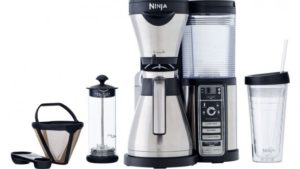One of our most important rituals of each day- weekday or weekend, at home or abroad- is starting the morning right with a cup of hot coffee. It might come from in a to-go cup from a cafe, made from fresh-ground Ethiopian or Sumatran beans, or come out of a French press that we’re sharing. But one of the most common brewing methods is via a single-cup appliance like those from Keurig.
We’ve tried out many of their machines over the years, and lots of their proprietary K-Cups too, from Green Mountain (GMCR) and those from many other producers. We even appreciated much about their somewhat controversial updates, the Vue system and the Rivo alternative. And recently, Keurig came out with a completely new version, which they’ve deemed advanced enough to call the Keurig 2.0. There is a lot to love about this sturdy machine, including some major updates that allow you to brew entire pots of coffee. The system is still convenient, attractive, simple, and offers some darn fine results brewed with no hassle in seconds.
But with every pair of steps moving forward, the 2.0 system takes a step back as well. For starters, one of the biggest problems we had with newer Keurig systems is their limited selection of coffees- and for us, like many people, variety is the spice of life. Our editor owns a coffee shop, and doesn’t shy away from bringing home new beans from various regions and suppliers and testing them out at home. With older brewers, there was an fill-your-own filter basket that worked very well with some practice. But that option is gone here. Granted, there are several hundred cups to choose from, from new ones like Gevalia to Dunkin’ Donuts, Caribou, and Starbucks, plus lots of teas, but you’ll have to choose from authorized suppliers rather than the many new alternatives that have sprung up recently We should note that you can’t take your old K-cups and use them either- for no obvious reason. Instead, Keurig has developed a sort of technological lock that prevents you from using your own coffee, or older cups- a sort of DRM (digital rights management) for your beverage. The machine reads the lids of the cups, and controls what happens (or doesn’t happen in the case of older K-cups). And you can’t change the temperature or settings much, like you could before.
We liked the color touchscreen, and the included thermal carafe is a nice touch- some newer cup sizes allow much larger brews, taking only a couple of minutes for four cups, and results were great. Temperature consistency was better than ever, and the system is quieter than the older models too. The K500 is their top-of-the-line; K300 and K400 brewers are smaller (with correspondingly less space in the water reservoir), and the 500 adds the ability to dispense hot water directly and some extra lighting as well. We received a K550, but there appear to be no real differences between the K500 and K550 (or the 400/450, 300/350 either)- just retailer modifications around the included K-Cups. However, the inexpensive razor and “we’ll get ‘em on the blades” mentality left a bitter taste in our mouth that wasn’t from the coffee. The Keurig 2.0 is sexy and impressive, though unfortunately hampered. Hopefully future models only improve, but for the moment the K500/K550 is available for around $176 at press time.

